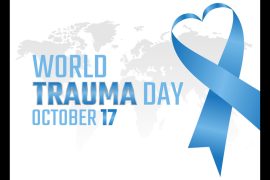Sinusitis – Symptoms, Causes, and Treatment
Sinusitis is an inflammation of the sinuses affecting the nose and occasionally the face, throat, and ears. Sinuses are hollow spaces in the skull behind the forehead, eyes, cheeks, and nasal passages. These sinuses get blocked and filled with fluid due to cold or allergies, resulting in inflammation. Sinuses are cavities in the skull, while sinusitis is a condition of inflamed sinuses.
How important are sinuses?
Sinuses play a key role in protecting the body against illness and taking care of our wellness. Sinuses, the hollow spaces filled with air, lighten the head’s overall weight. They also warm and humidify the air we inhale. Sinuses help enhance one’s voice quality and speech resonance. In an accident, the sinuses absorb the impact and protect the other facial structures. Sinuses also help drain nasal mucus that protects the nasal passage and keeps unwanted particles like dust and pollutants from entering the body. Healthy sinuses are empty except with a thin layer of mucus which continuously drains the germs, dust, and dirt out, keeping the nose clean and free from bacteria, as already mentioned above.
The four pairs of sinuses are-
Maxillary sinuses: Maxillary are the largest sinuses. They are positioned behind the cheekbones near the upper jaws.
Frontal sinuses: The frontal sinuses are divided into left and right frontal sinuses. The two sinuses are located at the centre of the forehead above each eye.
Sphenoid sinuses: Sphenoid sinuses are situated behind the eyes, near your optic nerve and pituitary gland.
Ethmoid sinuses: The Ethmoid sinuses are a collection of six to twelve small air pockets between the eyes and nasal bridge.
One develops sinusitis when the tissue lining the sinuses get inflamed or swollen. Sinusitis can also be caused by viral, fungal, and bacterial infections.
Symptoms of sinusitis
Sinusitis and common cold have similar symptoms, some of which may include the following-
Partial or total loss of smell called Anosmia
Fever, also known as Hyperthermia or pyrexia
Nasal congestion, which causes a stuffy or runny nose
Headache due to sinus
Cough or sore throat
Fatigue
As mentioned above, many sinusitis symptoms are similar to the common cold. But the main difference is that the symptoms of sinusitis tend to be more severe, last longer, and often include pain in the face and forehead. Sinusitis symptoms range from nasal congestion and facial pain to severe headaches and tooth pain.
Types of sinusitis
Depending on the severity and duration of the symptoms, sinusitis is grouped as –
Acute – Acute sinusitis, also known as Rhinosinusitis, where rhino means ‘the nose’ is the most common one with the shortest duration. The symptoms could remain for four weeks or less. Viral infections due to cold and seasonal allergies can cause symptoms that last up to ten days.
Subacute – In the case of Subacute sinusitis, the symptoms may last up to 12 weeks. Seasonal allergies or bacterial infections cause this type of sinusitis.
Recurrent acute – As the name suggests, there would be a reoccurrence of acute sinusitis at least four times in a year.
Chronic- Chronic sinusitis is when the symptoms last for at least 12 weeks.
Possible Contributors of Sinusitis
Anyone can develop sinusitis. Excessive mucus may get formed due to cold, bacteria, or allegories that gradually allow the bacteria and germs to grow in the sinuses, leading to infection. However, apart from cold, allergies, and viral or bacterial infection, other possible factors that may contribute to the development of sinus infection are-
- Weakened immune system
- Dental infection
- Smoking and Tobacco
- Structural issues with the nose like, nasal bone growth, uneven wall of tissue between the two nostrils (nasal septum)
- Nasal polyps
- Cystic fibrosis, a condition where thick and sticky mucus gets buildup in the lungs, intestine, and liver, which causes damage to the respiratory and digestive systems.
- Exposure to mold, pollen, dirt, etc.
Treatment of Sinusitis
Sinusitis is curable and treatable in most cases without consulting a doctor and antibiotics. But if the symptoms of sinusitis persist for a long, it is advisable to see your doctor and follow his advice and medications. The doctor would diagnose sinus infection based on the symptoms and the physical exam. In case of chronic sinusitis, the doctor may recommend imaging tests like X-ray, CT scan or MRI. Blood tests, nasal endoscopy, and allergy tests are a few other tests that may be needed to diagnose the severity of the infection.
In many cases, home remedies or over-the-counter (OTC) pain relieving medicines would help treat headaches or pressure in the forehead or cheeks. The doctor will prescribe antibiotic therapy to block any sinuses’ growth in cases of bacterial infection. In cases of chronic symptoms that do not improve or heal with medication, sinus surgery would be an option to clear sinuses, treat structural deformity related to the nose or remove polyps. The types of sinus surgery are-
- Functional Endoscopic Sinus Surgery (FESS)– In FESS, with the help of a magnifying endoscope, the surgeon views and removes the infected tissue or bone. With a small incision inside the nose, an endoscope equipped with a camera and light is inserted to help reduce the blockage and drainage of sinuses.
- Turbinate Reduction Surgery – This surgery uses radio frequency to reduce the swelling of the turbinates (tiny structures in the nose that cleanse the air passing through the nostrils). A needle-like instrument is inserted into the swollen tissue to control the damage. The turbinates gradually heal and reduce in size allowing proper and easy breathing.
Sinus Ostial Dilation Surgery– In this type of surgery, with the help of a balloon catheter inserted into the blocked sinus passage, the balloon is inflated and a saline solution is injected to flush out the mucus.
Health-promoting lifestyle is one of the ways to prevent inflammation. This includes a healthy and nutritious diet, exercise, limiting exposure to allergens and irritants, maintaining good hygiene, and avoiding contact with infected people.
Knowing the causes and symptoms of sinusitis help in treating the inflammation timely and preventing the recurrence of the same in the future.




Comments are closed.